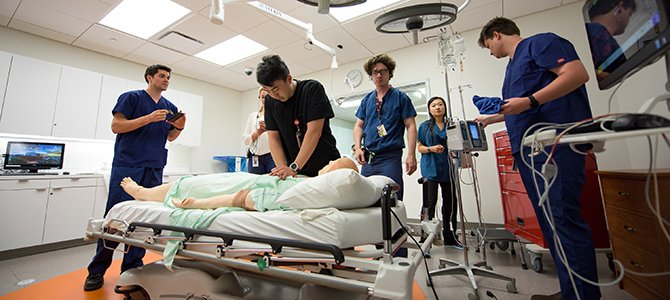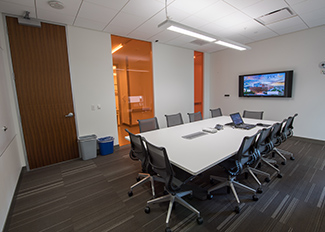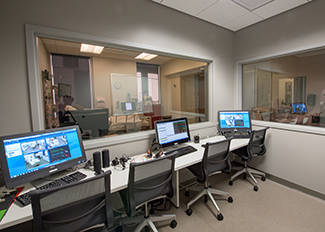The Center for Simulation and Innovation is particularly advantaged when it comes to accommodating large blocks of learners. Facilities encompass three wings of the Health Sciences Education Building (HSEB) at 435 N. 5th Street, Phoenix, Arizona.
The center, which opened in July 2012, has the capacity to educate many groups of students simultaneously. It is designed with highly adaptable simulation space and is outfitted with the latest technologies and equipment.
There are 6 procedure skills training labs and 14 simulation labs that include 11 hospital rooms, 1 emergency room and 2 obstetrics/surgery suites. The Simulation labs mimic in-patient hospital rooms and include an adult or pediatric high-fidelity mannequin, patient and stimulus monitors, and a functioning headwall. Other equipment, trainers and supplies may be added to support the simulation scenario. Additionally, each simulation lab has an associated, separately located operations control room and a dedicated teaching debriefing room, each accommodating the learners and faculty.

Simulation Environment
The task training rooms are available for students to learn a variety of procedural skills, including: blood drawing, wound care, lumbar puncture, joint injection, central line insertion, IV placement, arterial blood draw, chest tube insertion and airway management.
| Debriefing Room | Control Room |
|---|---|
|
|
|

 The Simulation Lab is equipped with three cameras and one microphone which allows for live patient interaction and recording of the scenario from behind the one-way glass. These control rooms are used for not only observation but for our simulation operator to act as the voice of the mannequin and update the patient vitals during the simulation.
The Simulation Lab is equipped with three cameras and one microphone which allows for live patient interaction and recording of the scenario from behind the one-way glass. These control rooms are used for not only observation but for our simulation operator to act as the voice of the mannequin and update the patient vitals during the simulation.